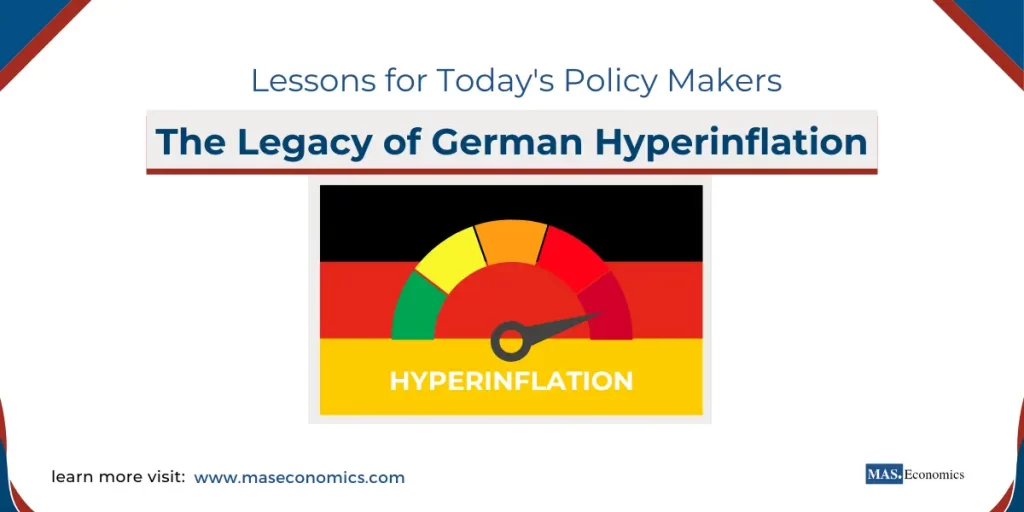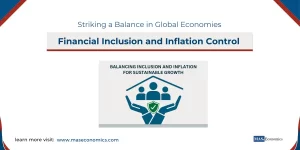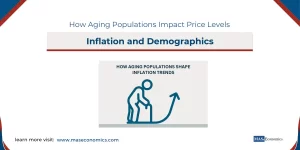The year 1923 marked one of the most chaotic economic episodes in German history: the infamous hyperinflation that left citizens carrying bundles of nearly worthless paper money just to buy a loaf of bread. This event was more than a financial crisis; it was a societal catastrophe that had profound and far-reaching consequences. This analysis not only provides historical context but also reflects on how similar challenges might arise in today’s interconnected global economy.
The Root Causes of German Hyperinflation
Hyperinflation in Germany didn’t happen overnight. It was a consequence of several interconnected factors, many of which can be traced back to World War I. The war left the German government burdened with colossal debts, as they chose to fund their military campaign not through taxation but by borrowing heavily. This marked a fundamental shift away from the gold standard. By 1914, the Reichsbank stopped redeeming banknotes for gold, allowing for the unchecked printing of paper money. This shift was the spark that ignited a much larger economic fire.
Another critical factor was the financial cost of social programs introduced after the war, such as welfare payments to war widows and pension schemes. The Weimar Republic, faced with growing political instability and revolutionary sentiment, attempted to maintain social stability through increased public spending, which only added to their fiscal challenges. These expenditures, coupled with the burden of reparations imposed by the Treaty of Versailles, set the stage for an economic disaster.
Reparations payments were especially problematic. In 1921, they represented over 30% of Germany’s government expenditures. This external pressure, combined with an already strained domestic budget, forced the government into a position where printing money became the only politically feasible solution. The occupation of the Ruhr region by French and Belgian troops in 1923, following Germany’s inability to meet its reparations payments, further exacerbated the crisis by reducing Germany’s productive capacity and increasing unemployment.
The Escalating Inflationary Spiral
The sequence of events that unfolded after World War I led to an almost inevitable inflationary spiral. When examining the dynamics of inflation, a key concept to consider is the imbalance between demand and supply. At the end of the war, Germany’s production capabilities were severely damaged. Much of the industrial capacity had been geared toward wartime production, and the transition to peacetime output was neither swift nor smooth. Adding to the supply constraints were widespread infrastructure damage and a lack of replacement investments.
In an attempt to meet increasing demand and finance both war debts and social programs, the German government turned to the Reichsbank, which began printing money at an unprecedented rate. This increased the money supply without a corresponding increase in goods and services, leading to higher prices. In June 1923, for instance, the exchange rate had skyrocketed to 110,000 marks per U.S. dollar, and by December of the same year, it reached unimaginable levels where the mark was essentially worthless.
The impact on everyday life was profound. Households found themselves unable to keep up with the escalating cost of living. Prices changed multiple times a day, and wages, though adjusted upwards regularly, could not maintain purchasing power. This led to a situation where bartering and using foreign currencies like the U.S. dollar became more practical than relying on the national currency.
Wage-Price Spirals and the Collapse of Confidence
One of the defining features of the German hyperinflation was the wage-price spiral. As inflation accelerated, trade unions, which had gained strength during the Weimar period, demanded higher wages to protect workers’ purchasing power. These demands were generally met, given the low unemployment rate of less than 2% at the time. However, each increase in nominal wages led to higher production costs, which businesses then passed on to consumers in the form of higher prices. This cycle continued, creating a feedback loop that further eroded the value of the currency.
Moreover, the currency devaluation significantly contributed to inflationary pressures. By 1922, confidence in the German mark had collapsed, resulting in a rush to convert marks into foreign currencies or tangible assets. This flight from the mark not only weakened the currency further but also exacerbated the inflationary cycle as the cost of imports soared. As the currency became increasingly devalued, the Reichsbank, constrained by political pressure, continued to print more money to finance government operations and to meet private sector demand for loans.
Policy Lessons from the Crisis
The German hyperinflation of 1923 holds several critical lessons for contemporary policymakers, especially those facing inflationary pressures today. One key lesson is the danger of excessive money printing without corresponding economic output. While deficit financing may be necessary in times of crisis, such as during wars or economic downturns, it must be coupled with measures that ensure long-term fiscal stability. Printing money to cover deficits is a short-term fix that, if unchecked, can lead to disastrous inflationary spirals.
Another important takeaway is the need for central bank independence. During the hyperinflation period, the Reichsbank was not in a position to refuse the government’s demands for credit, largely due to political pressure. A truly independent central bank can act as a counterbalance to fiscal policy excesses, ensuring that monetary stability is prioritized over short-term political gains.
Furthermore, the crisis highlights the importance of managing public expectations. Inflation is often driven as much by psychological factors as by economic fundamentals. Once confidence in a currency begins to erode, it can lead to behaviors—such as hoarding or converting assets into foreign currencies—that further drive inflation. Central banks today must communicate effectively and maintain public confidence to prevent such runaway inflation scenarios.
Comparisons to Modern Inflationary Episodes
Although the circumstances that led to the German hyperinflation were unique, there are echoes of similar dynamics in more recent inflationary episodes. For instance, countries like Zimbabwe in the 2000s or Venezuela in recent years have experienced hyperinflation driven by excessive money printing and political instability. In these cases, as in Germany, the central issue was the lack of trust in the currency, leading to a flight into more stable foreign currencies and tangible assets.
Modern economies are not immune to inflationary pressures, particularly in times of crisis. The COVID-19 pandemic, for example, led to an increase in government spending worldwide, financed through both borrowing and monetary expansion. While central banks like the Federal Reserve and the European Central Bank have tools at their disposal to manage inflation, such as interest rate adjustments and quantitative easing, the lessons of 1923 serve as a stark reminder of the potential consequences if these tools are mismanaged.
Conclusion
The German hyperinflation of 1923 is a cautionary tale of the dangers that arise when monetary and fiscal policies are not aligned toward sustainable goals. It teaches us the importance of maintaining a balance between money supply and economic productivity, the necessity for central bank independence, and the critical role of managing public confidence in the currency. While the world has changed significantly since 1923, the fundamental economic principles that underpinned the German crisis remain relevant.
For today’s policymakers, the German hyperinflation underscores the importance of responsible fiscal management, prudent monetary policy, and the avoidance of politically motivated economic decisions that can have far-reaching and devastating effects. By reflecting on these lessons, we can better equip ourselves to navigate the challenges of inflation in our own time, ensuring that history does not repeat itself.
FAQs:
What caused the hyperinflation in Germany in 1923?
The German hyperinflation was caused by several interconnected factors, including heavy borrowing during World War I, the decision to abandon the gold standard, large reparations payments imposed by the Treaty of Versailles, and the government’s increased social spending. These pressures led the German government to print excessive amounts of money, which eroded the currency’s value.
How did the Treaty of Versailles contribute to German hyperinflation?
The Treaty of Versailles imposed heavy reparations on Germany, which consumed a significant portion of the government’s budget. Unable to meet these obligations through taxation or other means, the government resorted to printing more money, which greatly increased inflation and set the stage for hyperinflation.
What role did currency devaluation play in the inflationary spiral?
Currency devaluation accelerated inflation by increasing import costs and eroding public confidence in the currency. People began to convert their money into more stable foreign currencies or tangible assets, further reducing the value of the German mark and creating a cycle that worsened inflation.
What is a wage-price spiral, and how did it impact German hyperinflation?
A wage-price spiral occurs when wages and prices continuously rise in response to each other. During the German hyperinflation, unions demanded higher wages to keep up with rising prices, and businesses raised prices to cover the higher wage costs. This created a feedback loop that accelerated inflation and further eroded purchasing power.
What are the main policy lessons from the German hyperinflation?
Key lessons include the dangers of excessive money printing without corresponding economic output, the importance of central bank independence to prevent political interference, and the need for clear communication to maintain public confidence in the currency. These factors are crucial for preventing inflation from spiraling out of control.
How does the 1923 hyperinflation compare to modern inflationary crises?
While unique in its historical context, German hyperinflation shares similarities with modern cases like Zimbabwe and Venezuela, where excessive money printing and political instability led to hyperinflation. These cases highlight the importance of stable monetary policies and public trust in the currency to avoid inflationary crises.
Why is the 1923 hyperinflation relevant to policymakers today?
The German hyperinflation serves as a cautionary example of how unchecked monetary expansion can lead to economic and social collapse. Today’s policymakers can apply these lessons by maintaining fiscal discipline, ensuring central bank independence, and managing public expectations to avoid runaway inflation.
Thanks for reading! Share this with friends and spread the knowledge if you found it helpful.
Happy learning with MASEconomics




